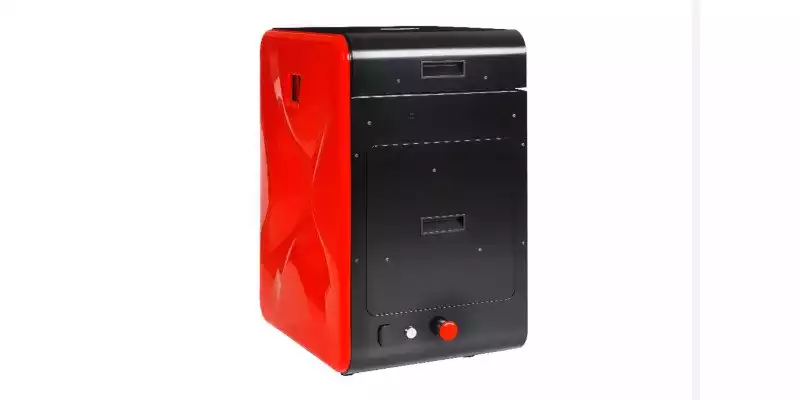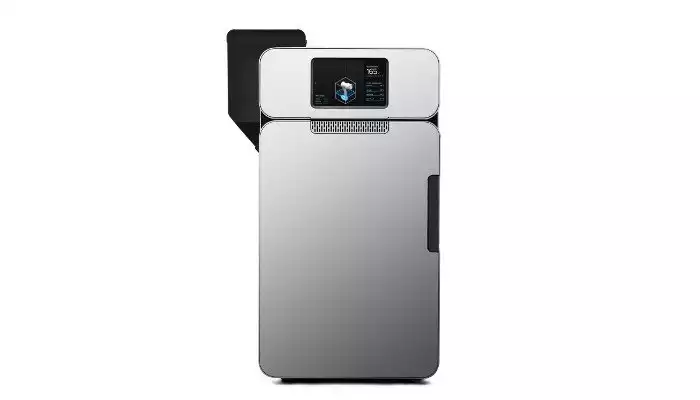Selective Laser Sintering is one of most used 3D printing technologies for creating accurate parts on demand. Having tested a wide range of SLS 3D printers hands-on, I’ve rounded up the top SLS printers for 2024:
Quick Overview
Picks from the Sinterit Lisa range (my recommended brand)
- Sinterit Lisa – Best First SLS 3D Printer
- With its affordable price point and ease of use, the Sinterit Lisa is a great first SLS 3D printer for design studios, schools, and hobbyists to learn powder bed fusion technology.
- Sinterit Lisa Pro – Best for Professionals
- The Lisa Pro from Sinterit offers enhanced precision, build volume, and features to serve professional designers and engineers needing production-quality SLS capabilities.
- Sinterit Lisa X – Best for Rapid Prototyping
- The fastest print speeds and largest build volume make the Sinterit Lisa X ideal for quickly producing prototypes or small batches of parts.
Worthwhile picks from other companies
- Formlabs Fuse – Solid All-Around SLS 3D Printer
- A balanced SLS printing solution with its decent build volume, WiFi/Ethernet connectivity, and good print quality.
- Nexa3D QLS 230 – Budget Industrial Printer
- Offers more material flexibility than the Sinterit range for industrial use.
- Nexa3D QLS 236 – Best Compact Industrial Printer
- This upgrade produces excellent quality parts faster than the QLS 230.
For beginners, the standard Sinterit Lisa provides an easy introduction to powder bed fusion at a reasonable price.
The Lisa Pro model offers a larger build volume and upgraded precision to serve professional designers and engineers needing more capabilities but still in a desktop package.
And for rapid prototyping and small production runs, the Lisa X delivers semi-industrial speeds and capacity in a device that still feels intuitive.
In this article, I’ll compare this range with models from other brands across key factors to help you determine if they justify the additional cost over the Lisa line’s proven performance.
Best SLS 3D Printers by Sinterit
1. Sinterit Lisa
- Price: $13,990 – Available on Matterhackers here
- Print volume: 150 x 200 x 150 mm
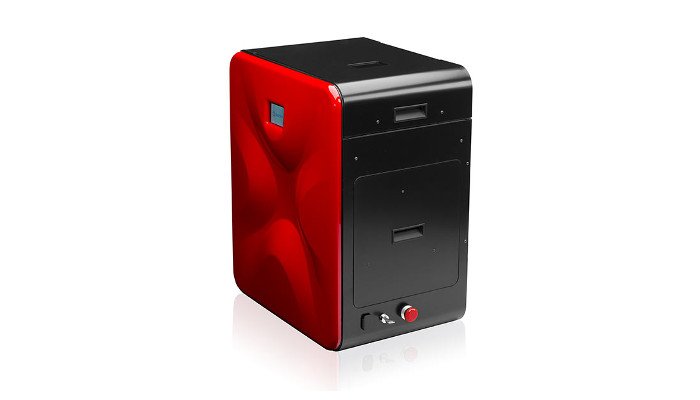
Pros
Affordable SLS printer.
Precise.
Compatible with Nylon and Flexa black materials.
Cons
Not portable, weighing in at 41kg.
For those seeking an affordable but highly capable introduction to real SLS 3D printing, the plug-and-play Sinterit Lisa hits the sweet spot between price and performance.
With its intuitive interface, compact footprint, and relatively affordable price point, the Sinterit Lisa is the perfect entry-level SLS 3D printer for small design studios, schools and hobbyists looking to adopt powder bed fusion technology on a budget.
The 150 x 200 x 150 mm build volume can handle most single part prints, where compatibility with robust PA12 Nylon and Flexa materials allows strong and durable parts to be printed with precision down to 75 microns.
The 4-inch touchscreen makes control intuitive, and WiFi connectivity combined with a built-in camera lets you monitor your prints-in-progress remotley.
More advanced users may desire larger build volumes or industrial production speeds, but the Lisa’s balance of quality, simplicity and affordability is hard to beat.
This impressive starter SLS machine offers affordable, precise desktop 3D printing.
150 x 200 x 150 mm build volume and compatibility for PA12 nylon and Flexa materials.
2. Sinterit Lisa Pro
- Price: $18,990 – Available on Matterhackers here
- Print volume: 150 x 200 x 260 mm (may be smaller maximum limit for some materials)
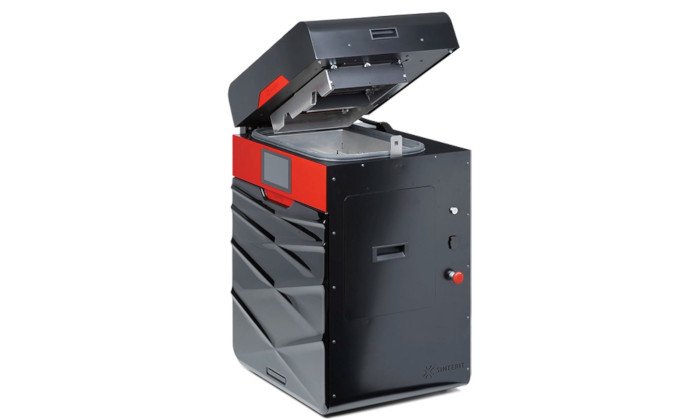
Pros
Great precision.
Large build area.
Smooth and accurate powder parts.
Cons
Very expensive.
The Sinterit Lisa Pro is the upgraded version of the Lisa, and comes with a number of improvements, most notably far better precision (0.05 mm vs 0.175-0.75 mm).
The results are noticeably smoother and more accurate powder parts — very important in industrial applications like prototype testing.
It also comes with a 110 x 160 x 245mm build volume, a significant step up from the original Lisa’s 110 x 160 x 155mm that allows you to print far taller parts.
Despite the higher price tag, many will consider the precision and larger build area worth it. You get their 3D printer software tool with the printer, Sinterit Studio 2019, and though Sinterit sell their own SLS printer powders, the Lisa Pro accepts third party powders.
Improves on the original Lisa with upgraded precision down to 0.05mm, a larger build area, and smoother powder part results ideal for industrial prototyping applications.
3. Sinterit Lisa X
- Price: $23,990 – Available on Matterhackers here
- Print volume: 130 x 180 x 330 mm

Pros
Very fast print speeds up to 14 mm/h
Large build volume of 330mm in Z-axis
Compatible with 9 materials including ESD powder
Cons
More expensive than the other Sinterit Lisa models
May not suit very large production runs
The Sinterit Lisa X is the latest SLS 3D printer from Sinterit. IT builds on their previous Lisa and Lisa Pro models to deliver a lightning-fast printing speed of up to 14 mm/h, allowing most prints to finish within 24 hours.
The Lisa X has a build volume of 130 x 180 x 330 mm, giving even more Z height than Sinterit’s other SLS printers.
And despite the larger build area, the Lisa X maintains a compact footprint for easy integration into workspaces.
With compatibility for 9 materials, including specialized options like ESD powder, the Lisa X enables high-quality functional parts for diverse applications.
As an open system, 32 print parameters can also be customized.
Overall, the Sinterit Lisa X combines industrial-level speeds and quality, while still remaining relativly user friendly for an SLS 3D printer.
It’s objectively the best SLS 3D printer on the list, it’s just a case of whether you feel the speed and build volume is worth the higher price tag.

Lightning-fast professional SLS 3D printing up to 14mm/hr in a compact, accessible package.
With a build volume of 130 x 180 x 330 mm, this desktop powerhouse is ideal for rapid prototyping and small production runs.
Other SLS Brands Worth Considering
4. Formlabs Fuse 1
- Price: Get quote from Dynamism here
- Company based: USA
- Print volume: 165 x 165 x 320 mm
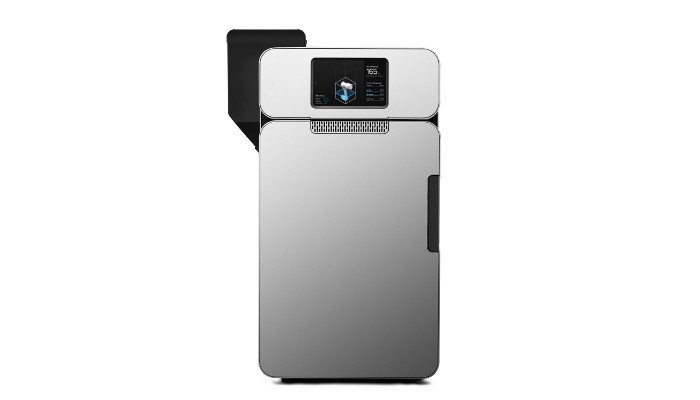
Pros
Good all-around powder printing solution.
Decent printing volume.
Can be connected via ethernet or WiFi.
Cons
Very heavy at 88kg.
Might be too expensive for some.
Since taking over desktop resin 3D printing with their Form range, the Fuse 1 is Formlabs’ first foray into the SLS 3D printer market.
Offering a speed of 10mm/s and a layer thickness of 100µm, the Fuse 1 is a good all-around powder printing solution.
The Fuse 1 can be connected via ethernet or WiFi, and has a very decent printing volume of 165 x 165 x 320 mm. The Fuse 1 is heavy however, weighing in at 88kg, so it’s not exactly easy to move around on a whim.
165 x 165 x 320 mm build volume and WiFi/Ethernet connectivity.
A worthwhile powder bed fusion option with decent print speeds and quality.
5. Nexa3D QLS 230
- Price: Get quote from Dynamism here
- Print volume: 230 x 230 x 230 mm

Pros
Fast 24 hour print cycle time
Compatible with over 10 materials including recycled powders
Low powder refresh rate of 20% saves on material costs
Cons
Smaller build volume than other industrial SLS printers
Only has a single laser compared to dual on higher-end systems
The Nexa3D QLS 230 is an open-platform SLS 3D printer aimed at industrial users on a budget.
It can produce parts in 24 hours thanks to a speedy sintering process with just a 2 hour cooldown period.
This is enabled by its moderately-sized 230 x 230 x 230 mm build volume and single 30W CO2 laser.
Nexa3D themselves provides a compatible range of 10 common SLS materials, plus recycled powders, and the QLS 230 can also print polymers like PBT via its open material platform which allows third-party materials.
It can also print cold metal fusion materials like titanium and steel when paired with additional debinding and sintering equipment.
Overall, the Nexa3D QLS 230 makes industrial SLS 3D printing across a wide range of materials more accessible when compared to other SLS 3D printers that can cost twice as much for the same level of compatibility.
Offers fast 24 hour print cycles and compatibility with over 10 materials including recycled powders.
A relatively accessible entry into professional powder bed fusion.
6. Nexa3D QLS 236
- Price: Get quote from Dynamism here
- Print volume: 230 x 230 x 250 mm

Pros
Very fast 21 hour print cycle time
Slightly larger build volume than QLS 230
Finer minimum layer resolution of 0.06mm
Cons
Relatively compact build volume
Still limited to a single laser configuration
The QLS 236 is step up Nexa3D SLS printer that builds on its predecessor with even speedier 21 hour print cycles.
It’s all thanks to a 60W CO2 laser that allows for fast printing up to 22 mm/hr.
Compared to the QLS 230, the 236 model has a larger 230 x 230 x 250 mm build volume in the Z-axis, and a finer 0.06 mm layer resolution for larger and more detailed parts.
Overall, the QLS 236 combines the productivity and part quality needed for professional use at a lower cost than higher-end industrial SLS systems. It also shares the open material platform and software capabilities of the 230, making it a versatile and powerful tool for a wide range of applications.
The compact build volume and single laser will still limit very large or high-mix industrial production – but for solo professional projects, the QLS 236 delivers serious SLS printing performance for the price point.
Fast, high quality SLS printing in a compact professional package, with 21 hour cycles and 0.06mm resolution.
A Short History of SLS Printing
Closely following Stereolithography as one of the first 3D printing technologies invented, Selective Laser Sintering was theorized by Carl Deckard in 1988 who filed the patent while working at the University of Texas.
Instead of using a UV light as with Stereolithography, SLS involves powder 3D printers using a laser to trace and solidify layers of powder polymers to create a finished part.
Until recently, SLS 3D printers were industrial 3D printers costing tens of thousands of dollars. However, with recent patents expiring and a renewed interest in 3D printing, several more affordable SLS 3D printers have been developed, starting at a few thousand dollars.
SLS 3D Printer Materials
While early SLS systems were limited to simple nylon powders, material options have rapidly expanded in recent years.
Here’s an overview of the capabilities of modern SLS materials:
- Nylons – PA11, PA12, and PA6 are the most common materials, providing excellent strength, heat resistance, and surface finish. PA12 offers the best all-around properties.
- Composites – Mixing in fillers like glass beads, carbon fiber, and aluminum results in enhanced mechanical characteristics like stiffness and heat deflection temperature.
- Elastomers – Flexible and rubber-like materials like thermoplastic polyurethane (TPU) allow a wider range of applications requiring ductility and elasticity.
- PPSF/PEEK – These advanced high-temp resins offer the highest heat deflection temps and chemical resistance needed for autoclaving.
- Specialty – From ESD resins to food-safe and high clarity materials, specialty options enable niche applications.
Many desktop SLS printers now provide an open materials platform, so users aren’t limited just to the manufacturer’s powders.
SLS 3D Printer Applications
Once limited solely to industrial sectors due to high costs, desktop SLS printers like the Sinterit Lisa series are making this technology accessible to a wider range of users.
Here are some of the most common and promising applications for SLS 3D printing:
- Functional Prototyping – SLS can create durable plastic parts for physical testing and concept validation. The accuracy and material strengths are ideal for evaluating the form, fit and function of designs without big tooling investments.
- Manufacturing Tools and Fixtures – Jigs, guides, nests and other production tools that need to withstand heat and chemicals are perfect uses for SLS nylon materials. Low-volume tooling can be printed on demand.
- Automotive and Aerospace – SLS materials have excellent thermal resistance, low friction, and high stiffness suited for automotive underhood parts and interior components, as well as lightweight aerospace interior parts.
- Healthcare – Biocompatible SLS materials allow customized production of surgical tools, guides and implants without the costs of traditional manufacturing. Gradually dissolving support structures enable complex inner geometries.
Is SLS faster than SLA?
Generally yes, SLS is faster than SLA. SLS doesn’t require time-consuming resin washing and curing. Build times are faster.
Why is SLS printing so expensive?
The SLS process requires expensive machinery and materials. The printer itself is costly. Powders are expensive and recyclability is limited. This all drives up the cost per part.
What’s Changed?
Updated October 9th 2023:
At 3DSourced, we continuously update our recommendations to provide readers with the best information on 3D printers and services.
For this updated guide on SLS 3D printing, here’s what’s new:
- We’ve added new product recommendations including the Sinterit Lisa X SLS 3D printer, the Nexa3D QLS 230, and the Nexa3D QLS 236.
- We’ve removed some older product recommendations that have been discontinued or outpaced by newer models.
- We’ve added FAQs about the SLS printing process, material properties, and ideal applications.
- There is now a section on material compatibility with details on popular SLS thermoplastics like nylon, TPU, PEBA, and more.

